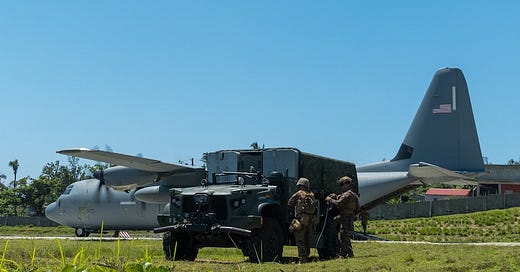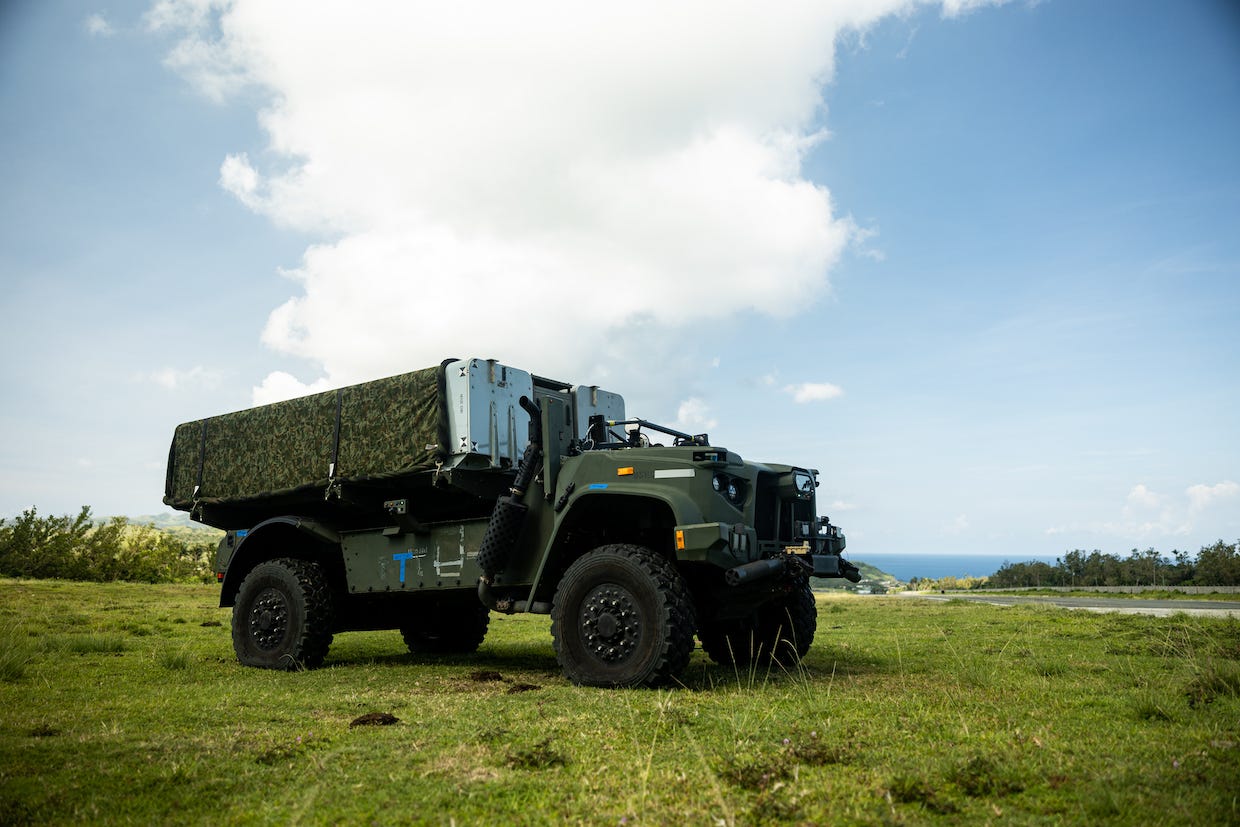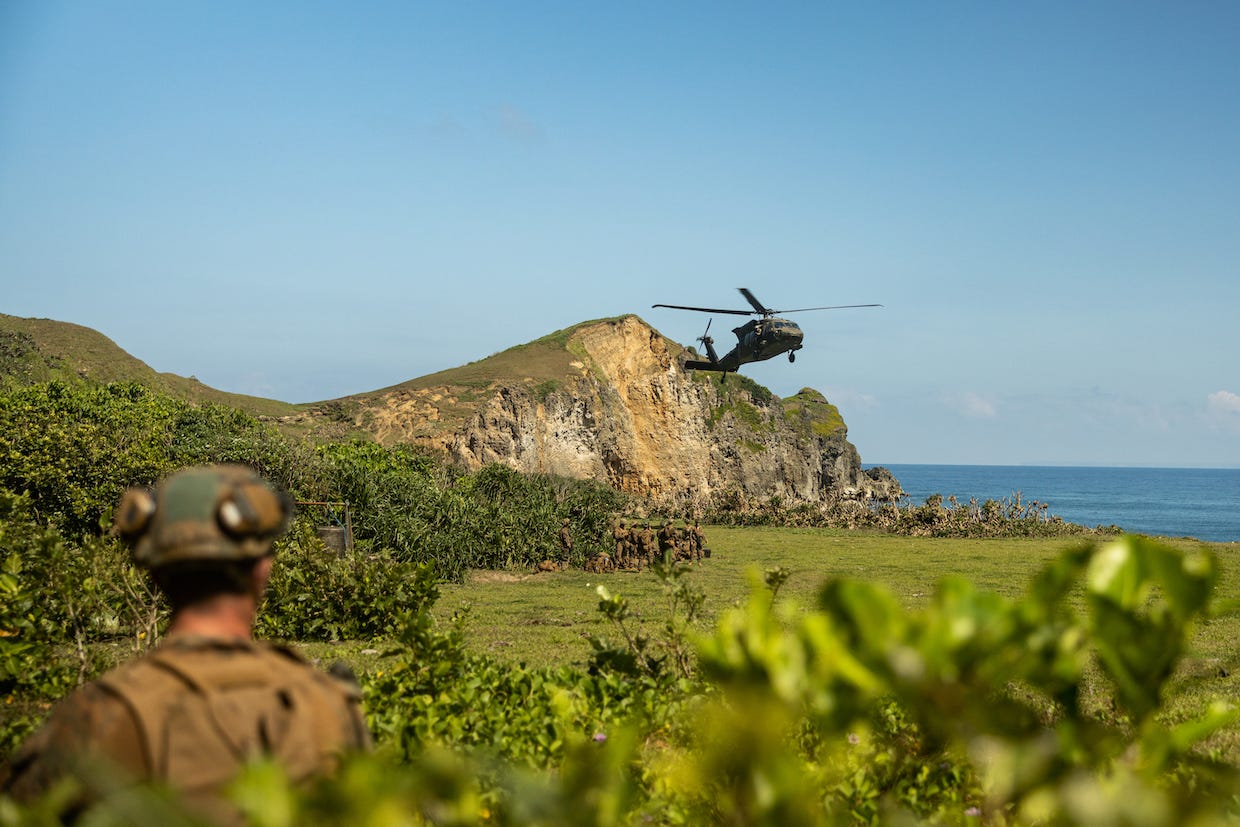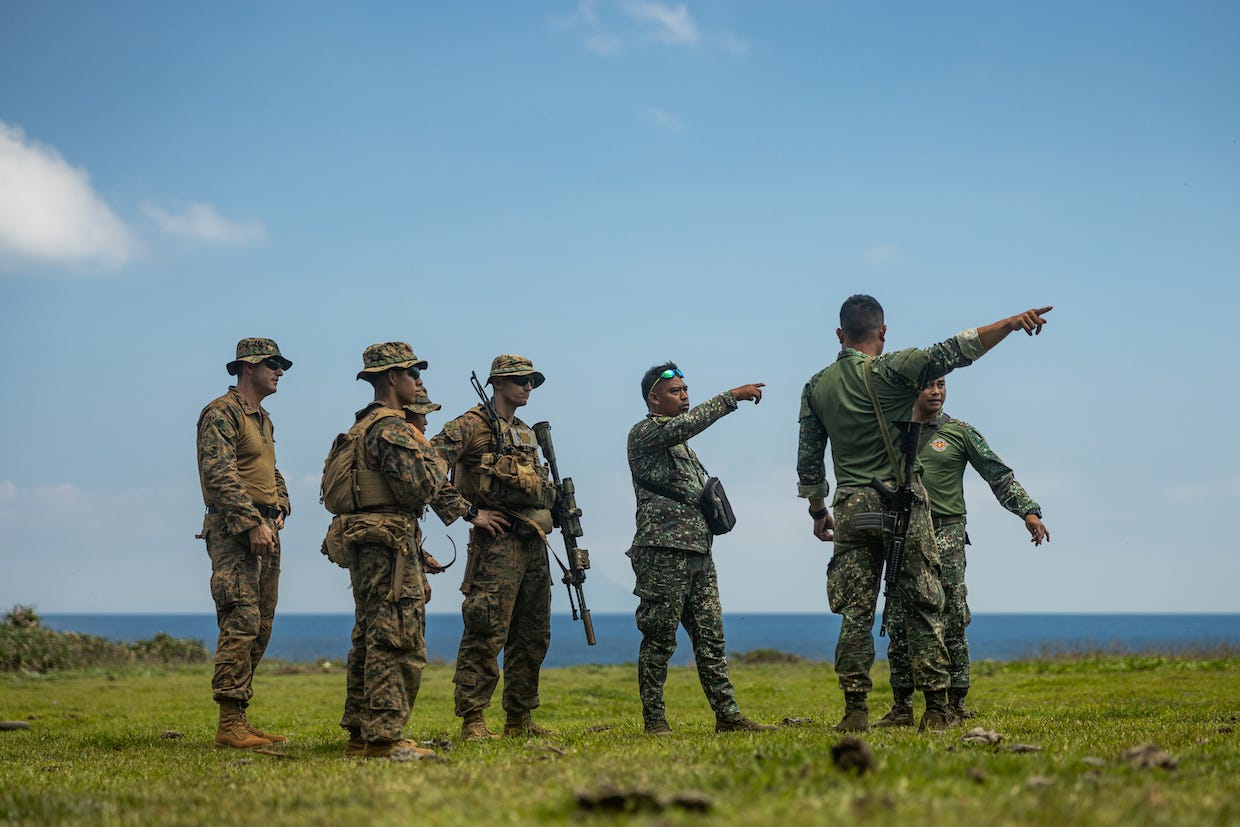New US missiles get warm welcome in the Philippines
The US military has sent two of its newest missiles to the Philippines, a reflection of how it's trying to build up its presence on the frontline with China.
US Marines wrapped up exercises with the NMESIS anti-ship missile in the Philippines in early June.
NMESIS is the second new missile the US has sent to the Philippines for exercises over the past year.
The deployments reflect both countries’ focus on deploying more capable forces amid tensions with China
In early June, the 3rd Marine Littoral Regiment and its new NMESIS anti-ship missile wrapped up two months of exercises around the northern Philippines.
It was only the latest Philippine deployment for the 3rd MLR, which first went there a few weeks after it was established in early 2022, but it was the first for NMESIS, the unit’s main anti-ship weapon, which reflects how both countries are increasing their military capabilities and presence around strategically important waterways in the Western Pacific.
NMESIS — short for Navy-Marine Corps Expeditionary Ship Interdiction System — is built to be mobile and have a small footprint. It consists of a unmanned ground vehicle with a launcher for the Naval Strike Missile, a sea-skimming cruise missile with a range of about 115 miles. Troops in two support vehicles can control the launch vehicle remotely, allowing them to disguise its location and shield themselves from return fire.
The 3rd MLR and its NMESIS were sent to the Philippines before the annual Balikatan exercise, held from late April to early May. At the time, officials said the weapon would remain there for the annual Kamandag exercise, which ended on June 6.
Both exercises saw troops train to deploy to remote but strategically important territory. During Balikatan, US aircraft transported troops and equipment, including NMESIS, to islands north of Luzon, including the Batanes chain just a few dozen miles from Taiwan. While there, US Marines set up radars to gather intelligence, which was relayed to different units for processing into targeting data and then sent to NMESIS teams who “conducted simulated strikes on nearby and passing vessels.” The drill was “one giant leap for US-Philippine-delivered sea denial capabilities,” Col. John Lehane, 3rd MLR commander, said afterward, referring to the goal of denying adversaries the ability to move freely around key waterways.
Kamandag featured similar training in the same area. US and Philippine forces transported NMESIS and other weapons to the Batanes and nearby islands. US Marines on Luzon oversaw a targeting process that gathered data from reconnaissance platforms, including a US Navy P-8 patrol plane, “to find, fix, and track maritime targets.” Those Marines then directed a remotely operated NMESIS battery and other firing units on the islands “to notionally engage vessels of interest transiting the Luzon Strait.”
NMESIS wasn’t actually fired during the exercises, but the simulations allowed troops to practice coordinating among friendly forces, planning maritime strikes, conducting the targeting process. The drills also tested US troops' ability to move around coastlines and islands where terrain is rough and infrastructure limited, a focus as they train to operate on far-flung and underdeveloped Pacific archipelagos. The US Army’s 1st Multi-Domain Task Force, a unit like the MLR, has done similar exercises with HIMARS launchers in the Philippines in recent months.
As of June 10, NMESIS was still in the Philippines. Philippine Navy spokesman Capt. John Percie Alcos told media that day that it “will remain here in our country for as long as training opportunities are still there for us to use that particular military equipment so that our Marines can better conduct combined operations with their counterparts.”
NMESIS’ presence shouldn’t be seen as a threat but as “a deterrent to anybody who intends to conduct illegal, coercive, aggressive, and deceptive actions against the Philippines,” Alcos said, using a phrase, often shortened to “ICAD," that refers to Chinese activity that is aggressive but below the threshold of an attack. But NMESIS would be useful if things escalated, Alcos added: “This will be extremely helpful if amphibious raids or amphibious landings are planned against our country.”'
‘Forward-postured, combat-credible’
First Lt. Annie Pentaleri, a spokeswoman for the 3rd MLR, declined to comment on Alcos’ statement but said Kamandag’s conclusion “mark[ed] the end of 3d MLR’s exercising in the Philippines this year” and that “all of our personnel and equipment are making their way back to Marine Corps Base Hawaii.”
Even a short extension for NMESIS would be in keeping with a US effort to have forces in forward positions in the Western Pacific for longer periods, which is meant to strengthen relationships, familiarize US troops with local conditions, and demonstrate presence near hotspots around Taiwan and the South China Sea.
The Philippines has been a focal point for that effort. The countries have increased defense cooperation, and Manila has given US forces access to more bases to train and store equipment, though the US doesn’t have a permanent presence there. US troops often remain on the ground for several exercises in a row, especially Marines — the 3rd MLR participated in three exercises between April and June. Soldiers with the 1st Multi-Domain Task Force now typically spend two or three 30- to 60-day rotations in the Philippines each year, a 1st MDTF officer told Stars and Stripes in May.
The Philippine military is refocusing on external threats — specifically China, which has challenged Philippine control of swathes of the South China Sea — and is buying new hardware, like anti-ship missiles, to support that shift. As part of their increasing cooperation, US weapons that Manila is interested in have also been deployed for longer.
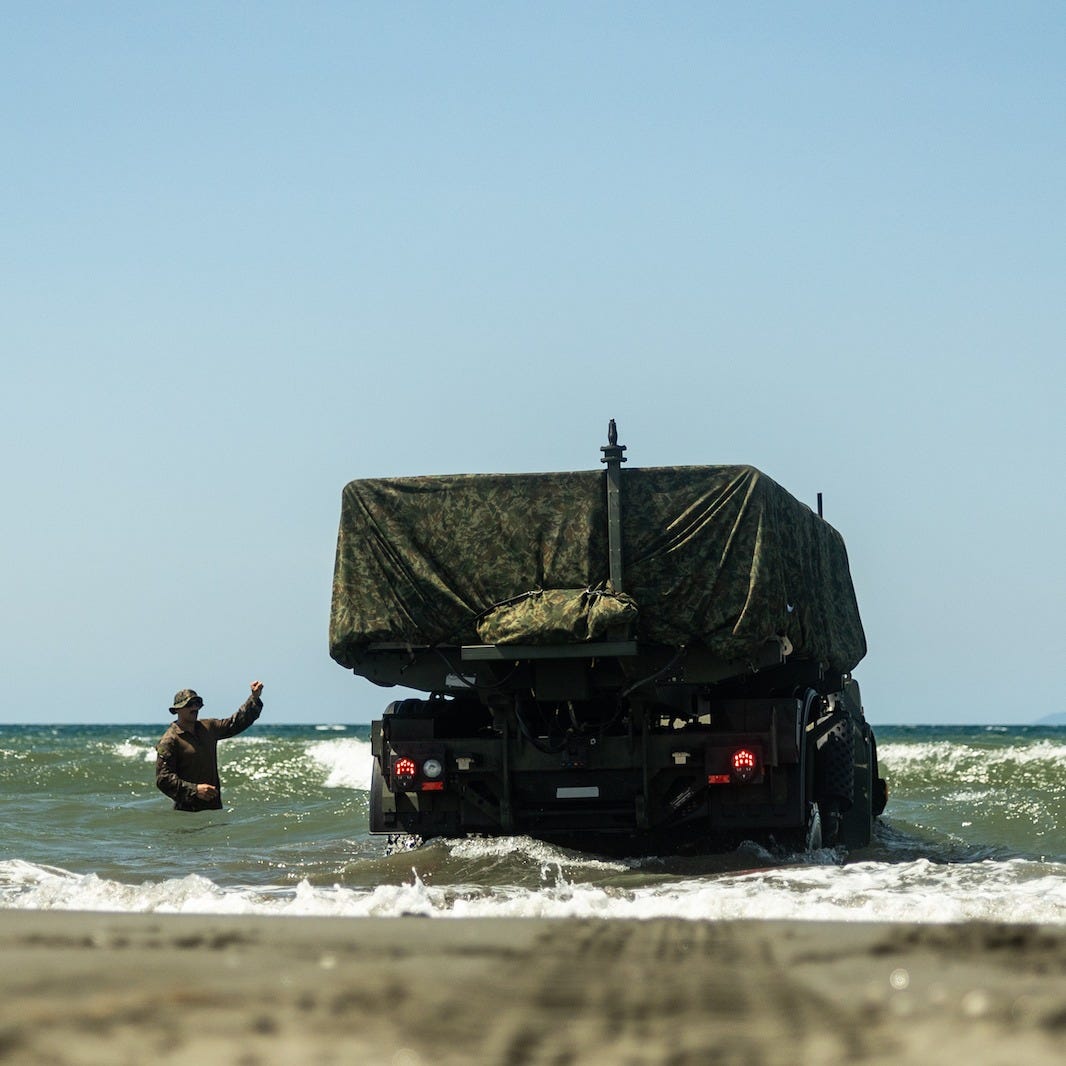
In April last year, the 1st MDTF deployed its Mid-Range Capability system, which fires several missiles, including Tomahawks with a 1,000-mile range, to the Philippines for an exercise. The system is still there, and Philippine officials say their troops continue to train with it. China frequently criticizes its extended presence.
Christine Wormuth, the Army’s top civilian official during the Biden administration, said in September that the service’s goal “has been to really try to have as much combat-credible capability forward in the [Indo-Pacific Command] theater as we can through exercises, to really try to have as much as we can forward west of the International Date Line six months a year or more. And we’ve been doing that, I think, through exercises and through having rotating capabilities like” the Mid-Range Capability and MDTFs.
The Trump administration is continuing that effort, casting it as essential to deterrence by showing that the US and its allies can deny an adversary success if it launches an attack. At the Shangri-La Dialogue in Singapore on May 31, Defense Secretary Pete Hegseth said the Pentagon “is prioritizing forward-postured, combat-credible forces in the Western Pacific to deter by denial.” Hegseth pointed to the NMESIS deployment by the 3rd MLR — “one of the US military’s most capable and lethal formations” — as an example of that prioritization.
A Philippine military spokeswoman said on June 16 that other deployments of US missiles like the Mid-Range Capability would be welcome, as it would give Philippine troops opportunities for enhanced training. Despite China’s reaction, the MRC is “a symbol of deterrence and not aggression,” the spokeswoman said.
Politics and logistics
US deployments to the Philippines are relatively straightforward in peacetime, but during a crisis or war, there may be logistical and political hurdles to getting forces in place and sustaining their operations.
War games by US experts have shown that MLRs and MDTFs would struggle to fight through Chinese attacks to reach Taiwan and that units already in place would be hard to resupply. In such a scenario, China may also attack US troops in the northern Philippines to destroy or degrade them and secure its own freedom of movement. (Doing so would likely bring Manila into the war, which Beijing may be willing accept if it can neutralize US forces.) Shortages of planes and ships — like the new landing ships that the Corps wants for MLRs but have been delayed — may also limit the US’s ability to get troops to and around the battlefield.
Despite Manila’s receptiveness to US deployments now, it may not be as welcoming amid heightened tensions or after fighting starts. While the US has leeway in peacetime — there is no set length on “rotational” deployments, as long as they are not back-to-back at the same location, according to a 2024 report by the Rand Corporation think tank — there is less certainty about what the Philippines will allow during a crisis or conflict.
The report noted that the Philippine president is largely responsible for approving requests to deploy US troops, and while the alliance is popular, Philippine leaders remain wary of being caught in a war between the US and China. Local opposition to a US military presence, which Beijing has tried to stoke, may reinforce Manila’s reluctance. Even if it approves a US military access request, it could take time to do so.
“Regardless of whether the United States has forces in the Philippines during peacetime or a crisis, if a conflict breaks out in which the Philippines is not attacked, there would be strong opposition to allowing to the United States to access any of its in-country capabilities and operate them directly from the Philippines,” the Rand report said. “And while there would be more flexibility if the Philippines is attacked, there would still a strong reluctance in the country to allow the United States to use the Philippines as a forward operating base from which to conduct combat operations that are not directly tied to the Philippines’ defense.”


